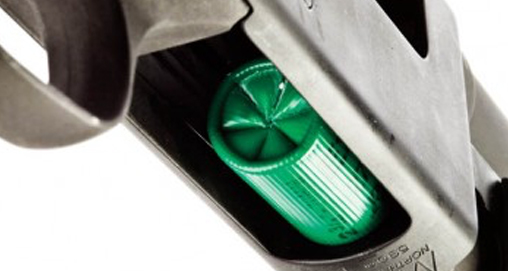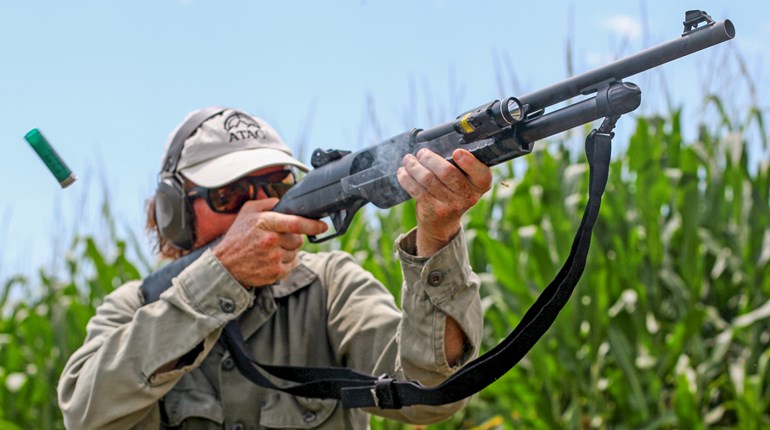
The hard truth about shotguns is they fail. All of them. That's right, shoot a semi-automatic or even a pump enough and eventually you will experience some sort of failure. Parts wear out and break. Guns get dirty.
Historically, the pump gun holds up better over time than the semi-automatic. However, that doesn't mean it's foolproof. Today's semi-autos are incredibly reliable compared to those of yesteryear.
Still, when it comes to absolute reliability, the pump shotgun is king. For starters, it has a simpler mechanism that doesn't rely on the complicated physics that power its semi-automatic cousins. The shooter provides the force required for the cycle of operation. Whether in tactical or even competitive conditions, when a pump gun goes bad, the culprit is usually the driver behind the trigger.
"Most of the shotgun failures or malfunctions I have seen are operator-induced," said Gunsite instructor Ed Head, who has spent years on the square range observing shotguns at work—throughout a law enforcement career as well as part of the famous cadre of Gunsite instructors. "On pump guns this often involves failing to run the slide hard. The operator-induced malfunction that most frequently stops the gun is loading a shell backward into the magazine..."
Put hundreds upon hundreds of rounds through a shotgun during a three- to five-day training regimen, and shotguns can fail. It's here where small parts break, springs go sprung and less-than-robust materials wilt in Cooper's iconic Arizona desert crucible. Those that fail end up in the hands of Gunsite's on-site gunsmith.
"Repairs may include replacing a chipped extractor, replacing a worn magazine-tube spring and generally tightening up or screwing parts back together," Head said. "With hard-use, things like sidesaddle shell carriers loosen or fall off, stocks get loose and wobbly and fore-ends sometimes need to be tightened up."
Shotguns like the Remington 870 and Mossberg 500 have proven their worth in such settings, making the pump gun the favored choice for law enforcement and home defense use. Historically, many semi-automatics haven't been able to keep pace, though times are changing.
"Pump guns, especially the Remington 870, are pretty bulletproof," Head said. "The older Remington 1100s are not always 100 percent reliable, as they are picky about ammo in some cases and things like gas rings or O-rings can wear out. The newer Remingtons, like the 11-87, are very reliable, as are the Benelli semi-autos."
Competitive shooters—Heavy Metal shooters withstanding—almost universally run a semi-automatic shotgun in practical shotgun and 3-gun competition. In this world, the Benelli M2 reigns supreme, with the FNH USA SLP steadily gaining ground. Remington 1100/11-87s have been popular over the years, with the new Versa Max now in the hands of a few top pros.
"When I started in 3-gun, I ran an 1100, which started as a stock hunting gun off of Gunbroker for $325," said FMG pro shooter Scott McGregor, who has used Remingtons, Benellis and an FNH USA SLP in his 3-gun career. "Al Greco from Al's Custom in Freedom, PA, turned it into a 3-gun shotgun. I like how the Remington shoots. The gas system makes the recoil very manageable, which makes for quick target transitions. Although I never had parts on the 1100 break, I would always have a spare set of gas rings in the travel tool kit."
From the 1100, McGregor moved on to an FNH USA SLP, a shotgun that has become extremely popular in 3-gun over the last few years. "I really like the FNH SLP MK1. It's a great shotgun and it cycles faster than any of the others I've shot," McGregor said. "Because it is a gas-operated gun, my old habits followed me. Before every match I tear it down and clean the gas system. I also check the piston spring."
"Occasionally a shell would get caught up on the edge of the chamber near the extractor cutout," McGregor continued. "The machining tolerances with FNH are so precise, it would create a sharp edge on which the shell would catch. A little emery cloth and elbow grease took care of that issue."
Benelli's recoil-driven guns have proven themselves extremely reliable in practical shooting. Today, the M2 is likely the most used shotgun in the game, with the highly modified versions from Salient Arms making a huge impact this season.
"In shooting a Benelli M2, one issue I had was to figure out the shell-release button," McGregor said. "Once I had that down, I did the obligatory smoothing of the loading area and haven't had an issue. Since there is no gas system, it saves some time when cleaning. I oil the Benelli when needed, it likes to run wet."
Within the 3-gun community, much of this is pretty standard. Yet it's here where there is some debate. Talk to FNH USA's Tommy Thacker, and you will learn he runs his SLP in stock configuration. Conversely, Taran Butler runs a Benelli modified to the hilt. And when one of these guns goes down in competition—and they virtually all will at some point—one has to wonder if some guns aren't modified beyond the capacity of the platform itself.
"On all of my shotguns, I tend to avoid going crazy with a Dremel tool," McGregor said. "I've seen too many kitchen table gunsmithing projects go horribly wrong. Any changes are done by hand, which usually will protect you from overdoing it. Once you take too much metal off of your receiver, it's tough to put it back. I like to run my shotguns in as close to stock configuration as possible with plenty of lubrication. If there is a problem, replacement parts are usually readily available. My biggest recommendation: Take the time to learn what you need to do to make your guns run and do what you need to do to ensure that it happens. Run them hard in practice, hopefully you can avoid a breakdown at a match. I'd like to think you can learn from the mistakes or misfortunes of others, but if you shoot 3-gun long enough, you'll eventually have your own 'learning experience.'"





































